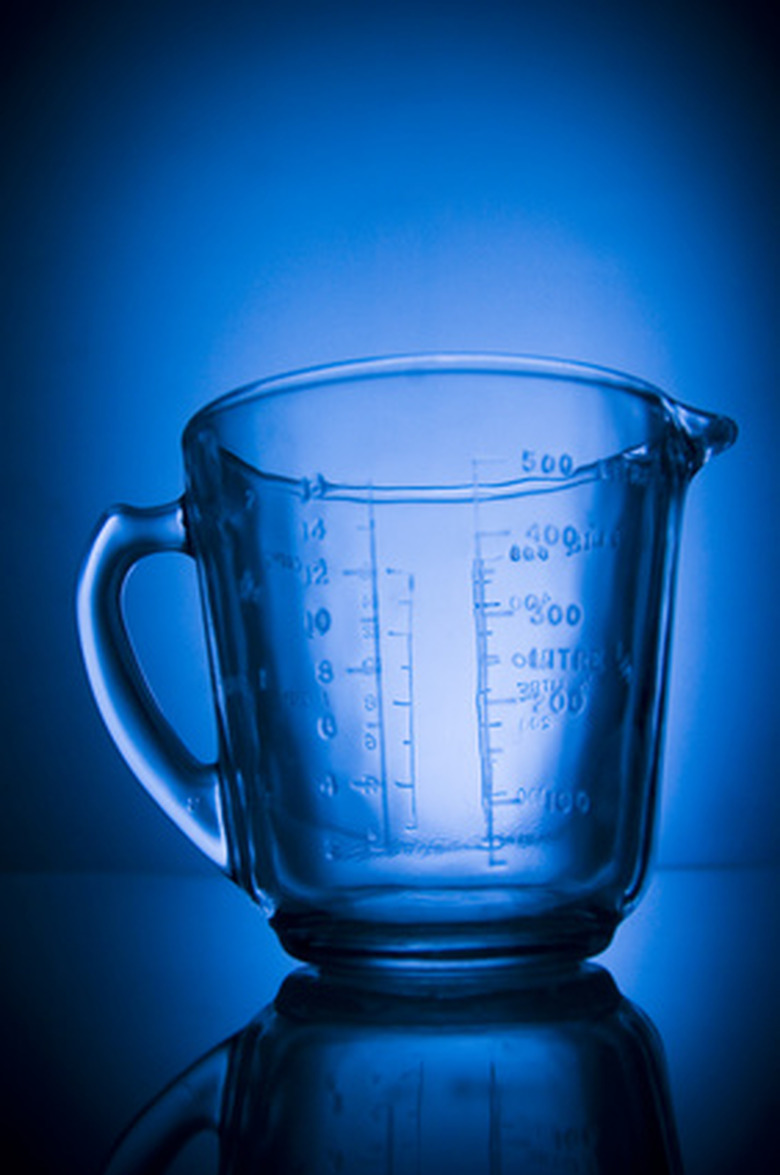How To Convert Ounces To Metric
Ounces, abbreviated as oz., come in two forms — measurements of mass or volume. Mass ounces further are broken into two categories, the avoirdupois ounce, most common in the United States; and the troy ounce, often used to measure jewelry. Mass and volume measurements of ounces are not related. A fluid ounce of a liquid, for example, may weigh more or less than a ounce in weight. To convert a mass ounce to the metric system, you must express the weight in terms of grams. A fluid ounce is converted to the metric system by expressing the volume as liters.
Ounces as Mass
Step 1
Learn the standard avoirdupois ounce to gram conversion, which is 1 oz. = 28.3495 grams.
Step 2
Multiply the measurement in ounces by 28.3495. You can set up an equation to do so;
y * 28.3495 = z
where y is the amount of ounces and z is the converted amount of grams. For example, convert 21 oz. to grams by multiplying 21 * 28.3495 to get 595.3395 grams.
Step 3
Calculate other units of metric weights by multiplying or dividing by a factor of 10. Multiply the grams result by 1,000 to learn the amount of ounces in milligrams, for example. Divide the grams result by 1,000 to figure out the amount of ounces in kilograms.
Step 4
Learn the conversion rate for troy ounces-to-grams: 1 troy oz. equals 31.1035 grams. Multiply the amount of troy ounces you have by 31.1035 to convert the measurement. For example, 5 troy oz. * 31.1035 is 155.5175 grams.
Ounces as Volume
Step 1
Learn the fluid ounces-to-liters conversion rate, which is 1 fl. oz. to 0.0295735296 liters.
Step 2
Multiply your fluid ounces by 0.0295735296 to convert the ounces to metric units. You can set up the equation as:
y * 0.0295735296 = z
where y is the amount of fluid ounces you wish to convert. For example, 100 fl. oz. is 100 * 0.0295735296, which equals 2.95735296 liters.
Step 3
Calculate other metric units of volume by multiplying or dividing by factors of 10. Multiply the amount of converted liters by 1,000 to figure out the amount of milliliters in your fluid ounces. Divide the converted liters figure by 1,000 to discover the amount of kiloliters in your fluid ounces.
Cite This Article
MLA
Philange, Tallulah. "How To Convert Ounces To Metric" sciencing.com, https://www.sciencing.com/convert-ounces-metric-7716781/. 24 April 2017.
APA
Philange, Tallulah. (2017, April 24). How To Convert Ounces To Metric. sciencing.com. Retrieved from https://www.sciencing.com/convert-ounces-metric-7716781/
Chicago
Philange, Tallulah. How To Convert Ounces To Metric last modified March 24, 2022. https://www.sciencing.com/convert-ounces-metric-7716781/
